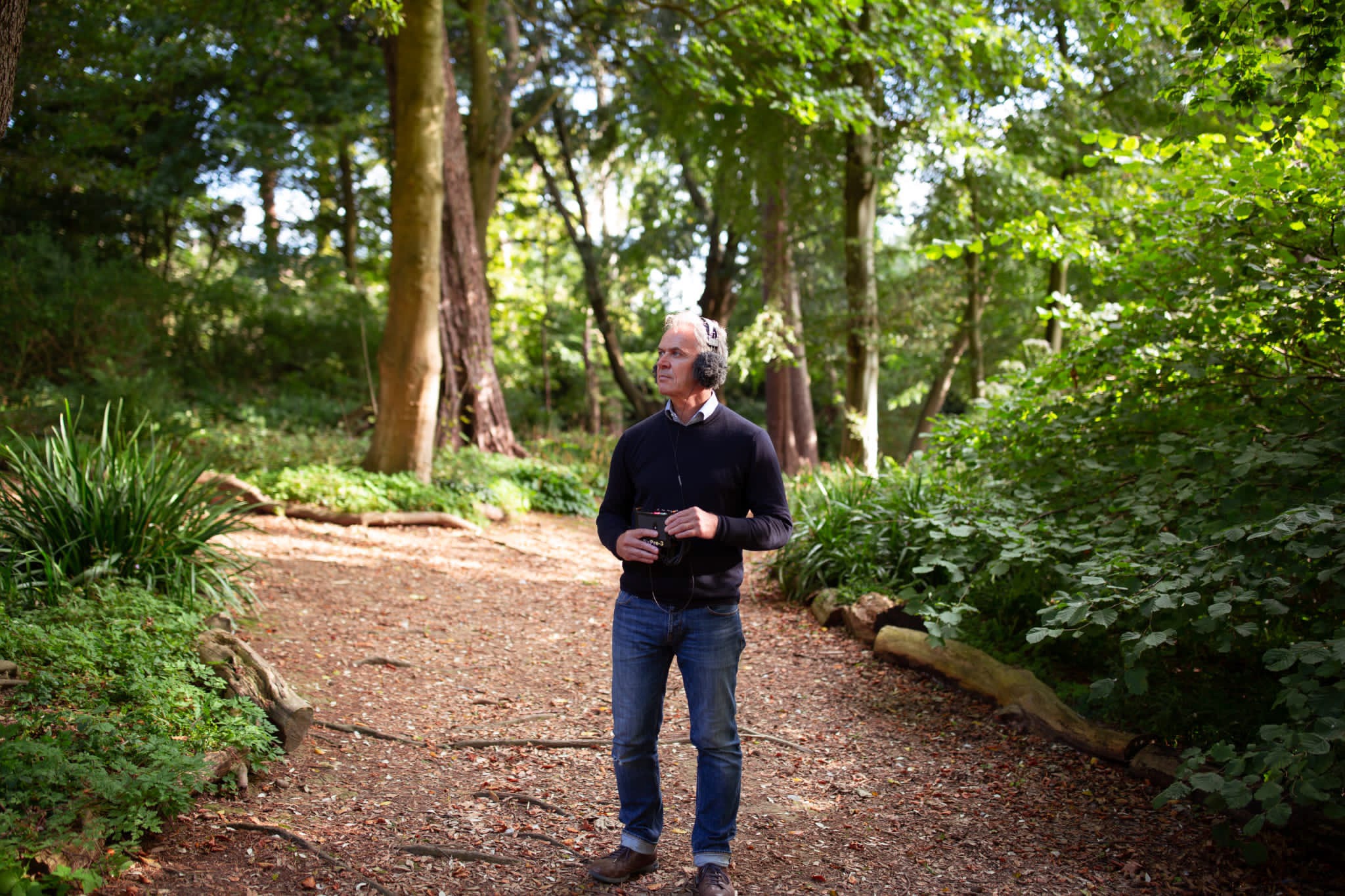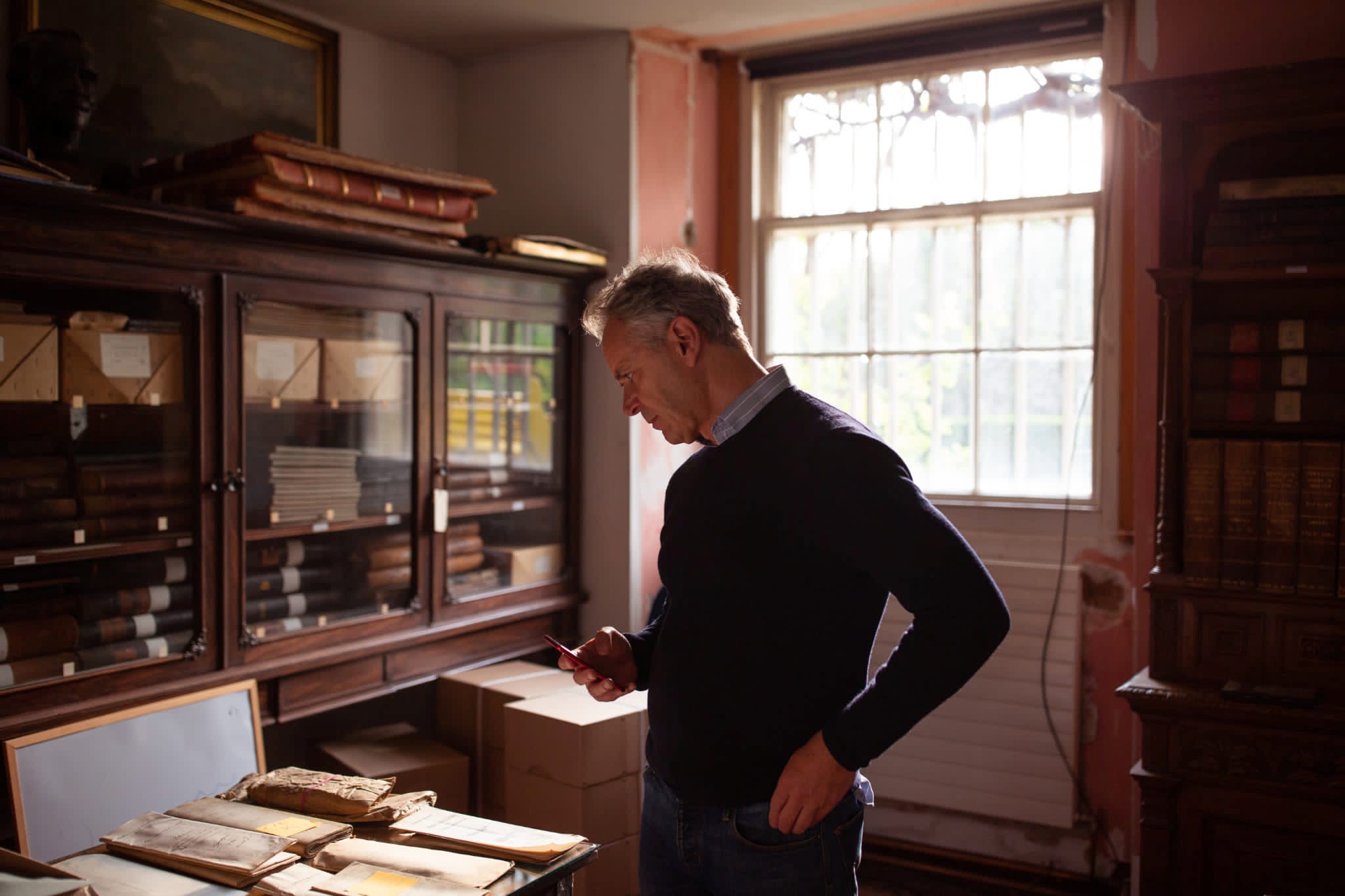In the audio paper Soundwalking, listening and contested histories, Joseph Young explores how sound art and specifically sound walking practices in the landscape can contribute to the discussion of contested histories through the creation of immersive sonic encounters.
This work is one of the shortlisted pieces for the Sound Walk September Awards 2024.
Below, we find an analysis of Joseph’s work.
Joseph Young’s The Ancestors is an intricate, immersive sound walk designed to explore the layered histories of Killruddery House and Gardens in County Wicklow, Ireland. Created as part of his practice-based PhD at SMARTlab, University College Dublin, and supported by the Irish Research Council, the work probes the intersections of sound, heritage, and contested history. Drawing on the Brabazon family archives, Young reimagines how the remnants of history can be activated through sound, creating a poetic and evocative experience.
Killruddery House, home to the Brabazon family since 1618, holds a rich and complex history of Britain’s ongoing presence on the island of Ireland. The family’s lineage can be traced to Sir William Brabazon, who was sent to Ireland by King Henry VIII to assist with the dissolution of the monasteries. The estate itself is built upon former monastic lands, a physical manifestation of colonial conquest. Young, as artist-in-residence, delved into these private archives to create a sound-based public artwork that reanimated the stories embedded in this space.
The resulting soundwalk, The Ancestors, launched in June 2022, is a geo-located journey through the estate. This accompanying audio essay attempts to unpick the creative process behind this hauntological odyssey through the text of Walk This Place (which forms part of the soundwalk), questioning how walking and listening can deepen our understanding of history and place. Young employs sound as a medium to interrogate the absence of public narratives about Killruddery’s colonial past, engaging listeners in a reflective and multi-sensory dialogue with the landscape.
Soundwalking, a practice originating from the acoustic ecology movement of the 1970s, serves as a foundation for Young’s methodology. He integrates the concepts of figures like R. Murray Schafer and Hildegard Westerkamp, emphasizing listening as an active process. At Killruddery, Young used silence, walking, and recording to explore the archives, initially assuming that understanding would flow naturally. Instead, the absence of direct sonic traces posed challenges, leading him to employ his own spoken reflections as a means of bridging gaps in comprehension. This practice evolved into what he describes as an informal “audio essay,” a format creatively explored by artists such as Chris Watson and Mark Fisher.
Central to Walk This Place is the idea of Stone Tape Theory, a poetic notion suggesting that landscapes and materials, like ancient stones, can metaphorically record historical trauma, replaying these “tapes” through sensitive engagement or technology. Young uses this concept to frame Killruddery as a site of spectral resonance, where historical events and colonial narratives linger in the architecture and grounds. The listener, guided by Young’s narration and archival reenactments, becomes a co-conspirator in this process, uncovering layers of history through movement and sound.
Young’s work also confronts the architectural embodiment of empire. The “aching facades” he describes reflect the grandeur of Killruddery and other Big Houses in Ireland, spaces intertwined with their former privilege. Through his sound walk, he draws attention to these structures as sites of both power and burden, grappling with their histories while acknowledging the ways in which the local community has reclaimed Killruddery as a shared asset, particularly during the COVID-19 pandemic.
The experience of The Ancestors intertwines past and present. Using binaural recording techniques, Young incorporates reenacted archival material performed by local actors, creating an intimate and startling sense of presence. These voices, alongside the sounds of the rural landscape, invite listeners to engage with the sonic memory of the estate. Simultaneously, the narrative is guided by “The Keeper of the Archive,” an unreliable narrator voiced by Young, whose British accent adds another layer of complexity to the work’s exploration of Ireland’s colonial entanglements.
As the listener walks, they encounter poetic provocations like “how do we understand history, through architecture or through absence?” This dichotomy invites reflection on the tangible and intangible aspects of heritage. Young connects Killruddery’s absence of explicit colonial narratives to a broader “hauntology of Empire,” a concept rooted in philosopher Jacques Derrida’s work. By engaging with these absences, he aims to make audible the inaudible, summoning the “ghosts” of history through technological mediation and creative soundscapes.
The culmination of The Ancestors is an acknowledgment of the enduring echoes of colonialism in Ireland. The “acts that thunder throughout the realm,” a line borrowed from Sir Thomas Wyatt’s 16th-century poetry, metaphorically link the reverberations of historical violence to contemporary understandings of place. The soundwalk transforms Killruddery into a space where past and present collide, offering a nuanced experience that is as much about questioning history as it is about immersing oneself in the sonic and visual beauty of the estate.
Through its innovative use of sound and narrative, The Ancestors challenges listeners to engage critically with heritage, history, and the landscapes they inhabit. By invoking the spectral and the sonic, Young creates a powerful reminder of how art can reanimate the past, providing new ways to understand and interact with the echoes of history.
The winner and honourable mention of the SWS Awards 2024 will be announced around the start of 2025.



